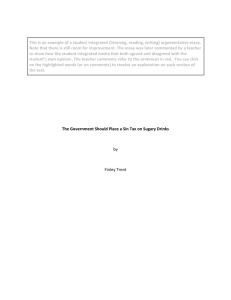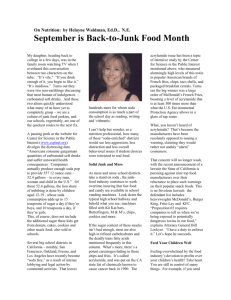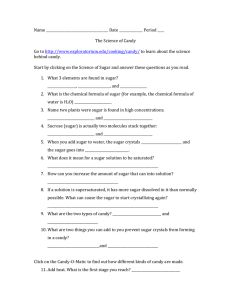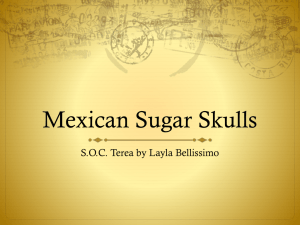Fractions I
advertisement
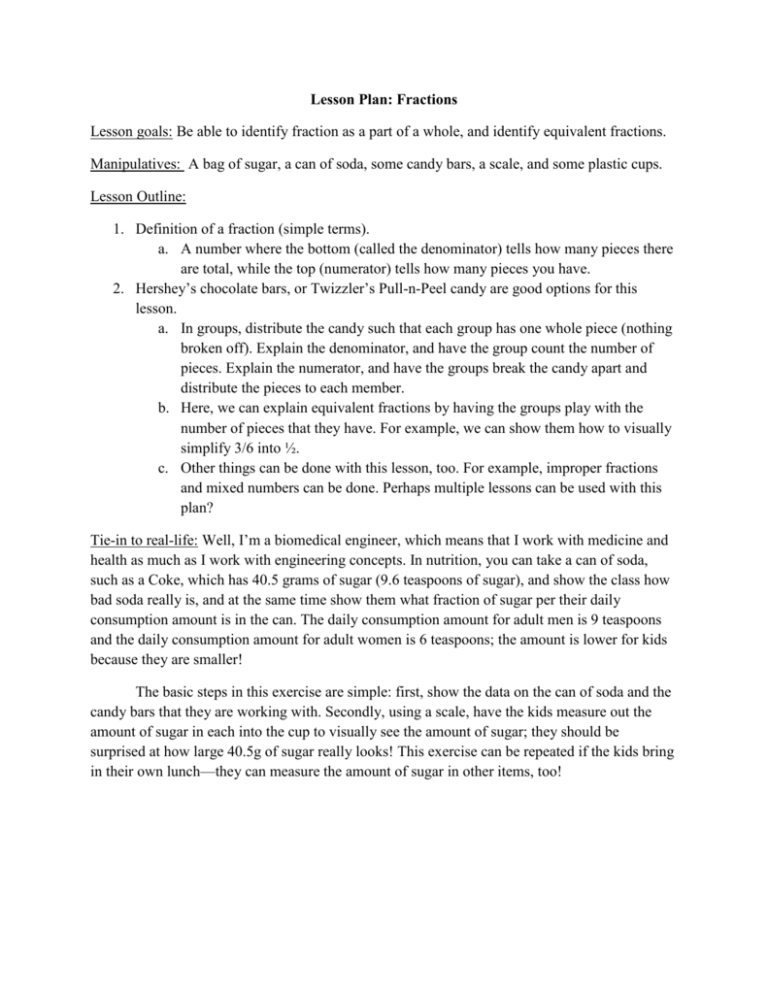
Lesson Plan: Fractions Lesson goals: Be able to identify fraction as a part of a whole, and identify equivalent fractions. Manipulatives: A bag of sugar, a can of soda, some candy bars, a scale, and some plastic cups. Lesson Outline: 1. Definition of a fraction (simple terms). a. A number where the bottom (called the denominator) tells how many pieces there are total, while the top (numerator) tells how many pieces you have. 2. Hershey’s chocolate bars, or Twizzler’s Pull-n-Peel candy are good options for this lesson. a. In groups, distribute the candy such that each group has one whole piece (nothing broken off). Explain the denominator, and have the group count the number of pieces. Explain the numerator, and have the groups break the candy apart and distribute the pieces to each member. b. Here, we can explain equivalent fractions by having the groups play with the number of pieces that they have. For example, we can show them how to visually simplify 3/6 into ½. c. Other things can be done with this lesson, too. For example, improper fractions and mixed numbers can be done. Perhaps multiple lessons can be used with this plan? Tie-in to real-life: Well, I’m a biomedical engineer, which means that I work with medicine and health as much as I work with engineering concepts. In nutrition, you can take a can of soda, such as a Coke, which has 40.5 grams of sugar (9.6 teaspoons of sugar), and show the class how bad soda really is, and at the same time show them what fraction of sugar per their daily consumption amount is in the can. The daily consumption amount for adult men is 9 teaspoons and the daily consumption amount for adult women is 6 teaspoons; the amount is lower for kids because they are smaller! The basic steps in this exercise are simple: first, show the data on the can of soda and the candy bars that they are working with. Secondly, using a scale, have the kids measure out the amount of sugar in each into the cup to visually see the amount of sugar; they should be surprised at how large 40.5g of sugar really looks! This exercise can be repeated if the kids bring in their own lunch—they can measure the amount of sugar in other items, too!


